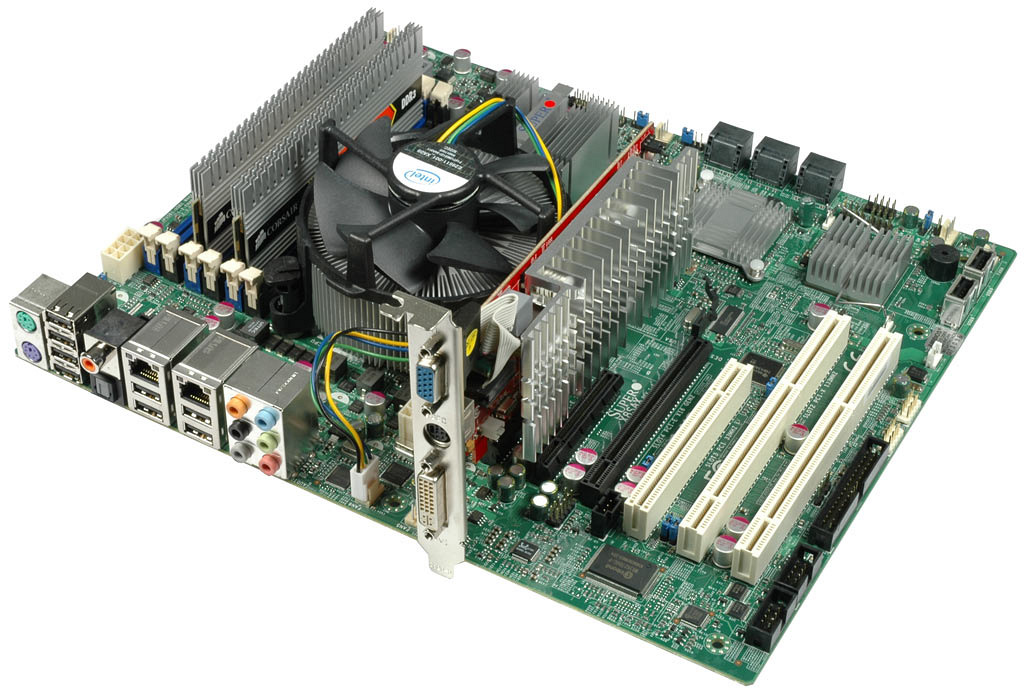Tom's Storage Charts 2009: A New Test Environment
Spring Break: New Storage Test System, New Storage Charts
We used our old storage test system for five years, and in that time, tested more than 250 hard drives and solid state drives (SSDs) as well as dozens of host adapters and RAID controllers. Although the platform still sounds reasonable—it is a 3.6 GHz Xeon Nocona single-core processor on an E7520 platform with 1 GB of DDR2-400 RAM—we felt that it was about time for a clean move to a more modern storage test system.
We decided to use a Core i7 920 and a flexible X58 motherboard by Supermicro. With it, we created new desktop, mobile, and SSD performance charts for 2009.
Storage Testing History
In an effort to include as many test results as possible (for the sake of direct comparison), it is important to use a consistent system setup for as long as possible. The mentioned Xeon system did a great job in its time with us. The processor was fast enough, and the Asus NCL-DS motherboard’s PCI, PCI-X, and PCI Express slots enabled us to test all sorts of storage adapters and hard drives on a single system. This meant that all of our performance numbers have been directly comparable. It has even been possible to compare drives across different market segments. The results have been available in our charts section, sorted by market segment:
3.5” Desktop Hard Drive Charts
2.5” Mobile Hard Drive Charts
Enterprise Hard Drive Charts (3.5” and 2.5”)
SSD Charts
External Drive Charts
The 3.5” desktop hard drive charts include most of the 3.5” hard drives on the market. Most of these are 7,200 RPM models, but the recent 5,400 RPM low-power drives are also included. The charts go all the way back to 2005, and include 80 GB hard drives as well as the latest models.
Our 2.5” notebook hard drive charts list SATA and UltraATA models, showcasing 4,200, 5,400, and 7,200 RPM models for easy comparison. The enterprise hard drive charts include 2.5” and 3.5” models running at 10,000 or 15,000 RPM. Finally, the external drive charts list a representative selection of recent and mature storage products. The SSD charts are the latest addition, and allow you to compare solid state drives easily.
Reasons for the Upgrade
Although we could have kept the old platform for a little while longer, there were several reasons why we decided to wipe the slate clean. First of all, Windows Server 2003 might soon become an issue for drives >2 TB, as older operating systems do not always support partitions above that size. You will be able to run a 3 TB hard drive, for example, on Windows XP, but the maximum partition size is 2 TB.
Second, the Xeon system itself is outdated by today’s standards. It is noisy, the system requires almost 250 W idle power due to its inefficient 90 nm core, which is basically the Pentium 4 Prescott, and its performance might be a limitation for the latest flash SSDs. Please check the article Does Power-Saving Technology Kill SSD Performance? For details on power versus performance with flash SSDs.
In addition to capacity and efficiency concerns, storage features were another reason to drop the old solution. The integrated Serial ATA storage controller was based on an 6300ESB I/O controller hub, and hence only supported SATA/150. To get around this, we decided to use a Promise FastTrak TX4310 SATA/300 controller, which initially did well, but turned out to be a performance bottleneck for drives that deliver more than 100 MB/s of throughput. This didn’t impact relative comparisons, as the performance ranking of various drives was the same as on other controllers, but the limited performance has been affecting our results with high-speed drives.
Finally, it wasn’t possible to check idle power on many drives, as none of the desktop or workstation controllers we used would support device-initiated power management. The new system, which is based on an X58 chipset and ICH10R, supports all of the current features, giving us some headroom until SATA/600 arrives next year. And it does everything at an idle power of only a bit more than 100 W. Now we're cooking...
Current page: Spring Break: New Storage Test System, New Storage Charts
Next Page Platform: Supermicro X8SAX w/ X58 ChipsetGet Tom's Hardware's best news and in-depth reviews, straight to your inbox.
